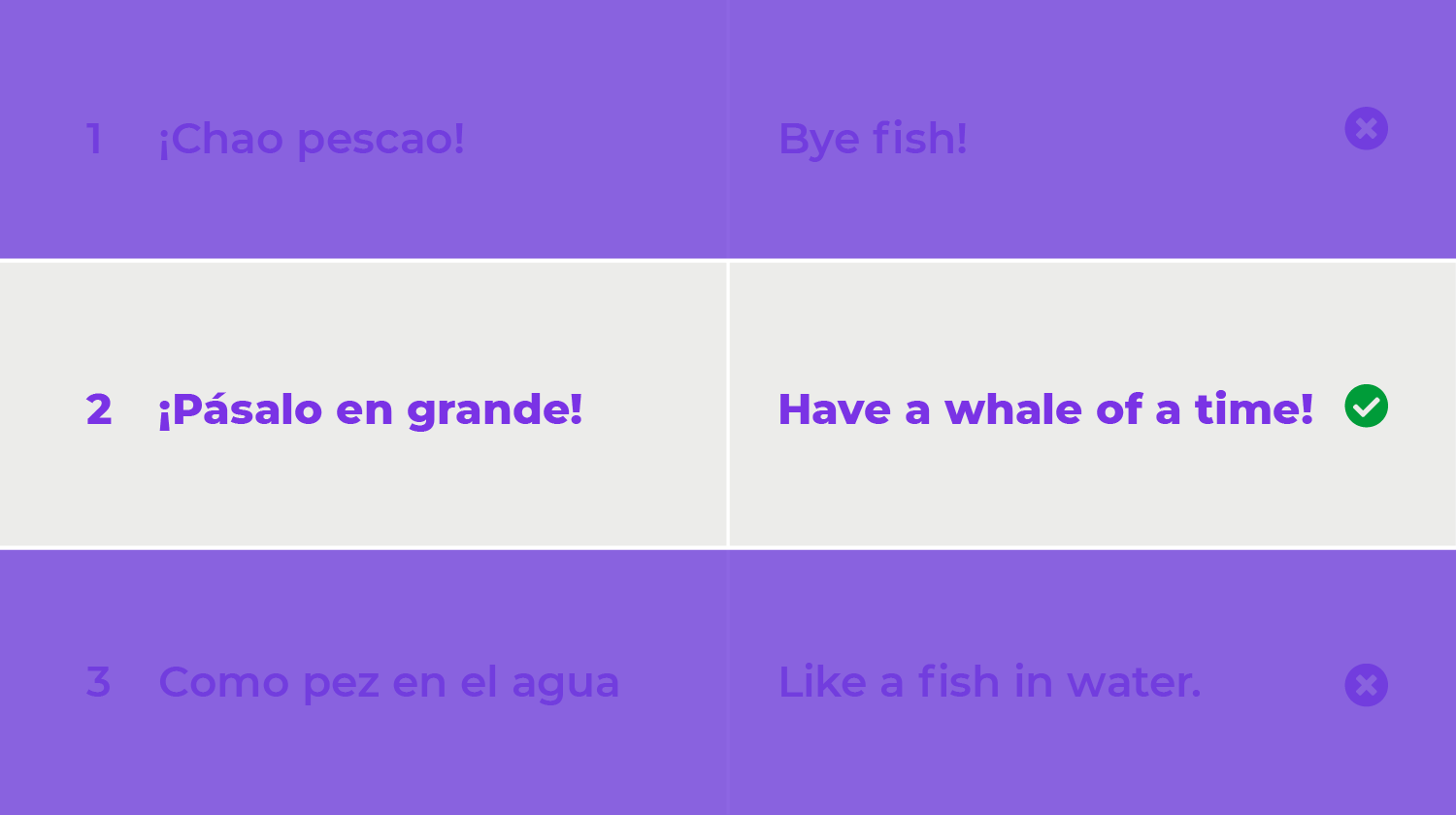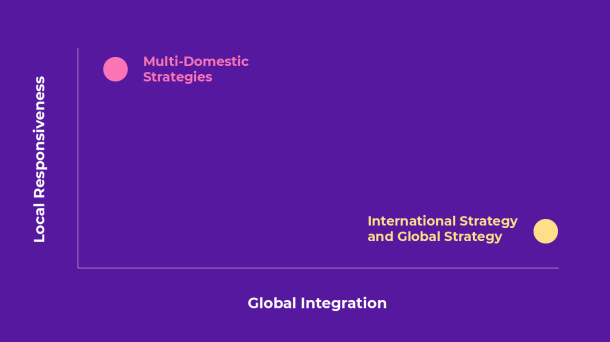How do you know when you need transcreation instead of translation? Both are common language service options but have several differences. Let's first start with the definition of transcreation.
What is transcreation?
Transcreation is the process of adapting content from one language to another while maintaining tone, intent, and style. It often involves reimagining content so that it resonates in a new market.
What is the difference between translation and transcreation?
Translation replaces words in one language with corresponding words in a different language. Although it may require you to rework certain portions of text, the final product typically includes some of your original content.
In contrast, transcreation services convey the concept in a different language. But transcreators use their creativity and cultural knowledge to ensure the content will resonate with your audience.
There’s more to understanding how transcreation differs from translation, though. You can distinguish between the two in six ways.
1. Transcreation specialists are writers
Usually, transcreation service providers are “copywriters” fluent in your source and target languages. Some professional translators do offer copywriting services in other languages. Yet, in general, translation and transcreation are different services. Often, translation and transcreation service providers aren’t even part of the same professional associations and networking groups.
2. Transcreation starts with a creative brief
Translation starts with a source text. Transcreation projects start with a creative brief (as do other creative projects in your source language). In your brief, it's essential to describe two things:
- The creative concept that needs to be recreated in the target language
- The action you want your audience to take based on the content or campaign
3. Transcreation is billed differently
Per-word pricing is typical for translation services but not for transcreation. It’s not equal compensation for all the work a transcreator does to recreate your brand's messaging. After all, the idea isn't just to translate word for word. Transcreation is a creative service, like copywriting, graphic design, or video production. Hence, it’s billed by the hour, or sometimes by the project.
4. Transcreation can result in new messaging
A good translator will translate website or app content “in the spirit” of the source text without being too literal. Even so, straight translation can weaken the impact of the message. The messaging you create for one segment of your target audience may not resonate with another. This is where transcreation comes in, resulting in messaging that’s brand new, targeted, and localized.
5. Transcreation is best for creative, marketing-focused copy
Translation works fine for informative text. But it’s often not the right solution for emotional content, like marketing campaigns and slogans. When you want readers to take action—as is the goal for most marketing copy—transcreation is a better fit.
Beyond delivering info, it conveys how you want your target audience to feel about your message. Plus, you retain control of your brand style and tone. As a result, you can influence your audience’s perception of your company and guide them toward action.
6. Transcreation involves advising on the look and feel
Aesthetic appeal is also critical for ensuring acceptance and resonance in the local market. So, transcreation service providers often advise customers on the look and feel of a creative asset or campaign. The result is new content that’s completely tailored for the new audience.
What do these differences look like in real-world scenarios?
Creative translation in the real world
Transcreation and creative translation may seem like interchangeable terms since they’re both aspects of localization. There is some overlap in the general idea—a professional converts your content to a new language and has to get creative in the expression of ideas, concepts, and idioms. But while transcreation is almost a recreation of your content, creative translation is a more general process.
Think of translating a blog post.
The translated text still expresses the source. There shouldn't be a need for back translation because the language should not have strayed too far from your original message.
Often, translators simply change idioms, analogies, and references to better relate to the culture they're writing for. This could also include restructuring sentences or paragraphs, and sometimes swapping content like images. For the most part, however, the original idea and wording remain.
Let’s see why simply translating content doesn’t work in many cases.
When translation doesn’t cut it: 4 examples of transcreation in the real world
Smartling experienced a unique challenge when we set out on our Move the World With Words campaign. When you translate a phrase like "move the world with words," there's a lot of meaning and context to capture. There are nuances in the language that can lead to confusion.
For example, does "move the world" mean “physically move the Earth to a new location”? In this case, no. It refers to "impacting communities, brands, and cultures," so a literal translation wouldn’t work.
We used transcreation to make sure our message was accurately expressed and printed the results on the back of our book.
But what's interesting to see are the back translations of each transcreation. When you transcreate, chances are high that there won't be any overlapping words from your original content. The back translation should reflect that.
Take a look at our process of translating "Move the World With Words" into French:
| FRENCH TRANSLATION | BACK TRANSLATION |
|---|---|
| Des mots qui changent le monde | Words that change the world |
| Des mots pour un monde meilleur | Words for a better world |
| Quand les mots font avancer le monde | When words help the world move forward |
| Des mots pour faire avancer le monde | Words to help the world move forward |
| Les mots au cœur de nos vies | Words at the heart of our lives |
| Des mots, des vies | Words, lives |
That's why back translation is so important. Your team can gain insight into the final product since it can differ entirely from your original.
Another example comes from the luxury car brand, Mercedes Benz, when it entered the Chinese market. The company translated its name to Bensi, unaware that it meant “rush to die.” Upon learning that it didn’t translate to “Benz,” it switched to Ben Chi, which refers to “dashing speed.”
Similarly, one of Coca-Cola’s slogans was “Open Happiness.” The direct phonetic translation was Keke Kenla (written in Chinese characters), but it meant “tadpoles bite wax.” As a result, Coca-Cola began using a transcreated version—Kekou Kele, which means “Delicious, Tasty Happiness.”
Lastly, Rajan Ad, CEO and Founder of DbdPost, shared with us an example from the transcreation process he oversaw for a global fashion brand. Its “Fashion For All” tagline translated well into some languages, but that wasn’t the case in others, such as Japanese.
Rajan said, “Through transcreation, we adapted the tagline to ‘Fashion for Every Moment.’ It conveyed the same sentiment, but in a way that was culturally relevant and resonated with the local audience. This resulted in a significant increase in engagement and conversion rates in the Japanese market.”
How transcreation can benefit your company
There are many advantages to preserving the intent, tone, and style of your company’s messaging:
- Safety. You reduce the risk of misunderstandings that could hurt your brand image and cost you customers.
- Trust. Showing a deep understanding of and respect for the culture of your target market makes them more comfortable engaging with you.
- Engagement. As their trust in your company grows, your audience will be more open to interaction, allowing you to building stronger relationships over time.
- Sales. You’ll generate new and repeat customers if your messaging is clear, culturally adapted, and an accurate representation of your brand.
For these reasons, when tailoring creative, marketing-focused copy for a different culture, transcreation provides a better return on investment than creative translation.
What does the transcreation process involve?
You’ve realized you need transcreation, but where do you start? Here’s a brief look at the process:
1. Conduct a needs assessment. Identify aspects of the source text that aren’t suitable for translation and require transcreation.
2. Develop the creative brief. Share any audience info you have, the overall creative concept, and the action you want your audience to take.
3. Let transcreators do their work. They will review the content, conduct necessary cultural research, and adapt the content for the new audience. They may also make recommendations related to the look and feel of the asset or campaign.
4. Review the content. With the help of back translations, verify that the text follows the guidelines and accomplishes the goals in your creative brief.
Smartling’s Transcreation Tool—the only one designed for transcreating at scale—simplifies this process. As shown in our walkthrough of the transcreation tool, transcreators can add multiple options and back translations. All you have to do then is choose your favorite.

Transcreation is a valuable asset to have in your localization arsenal. It helps you create authentic, personalized experiences for your audience no matter where they are. For more on how to leverage transcreation for your own company, book a meeting with us today!






